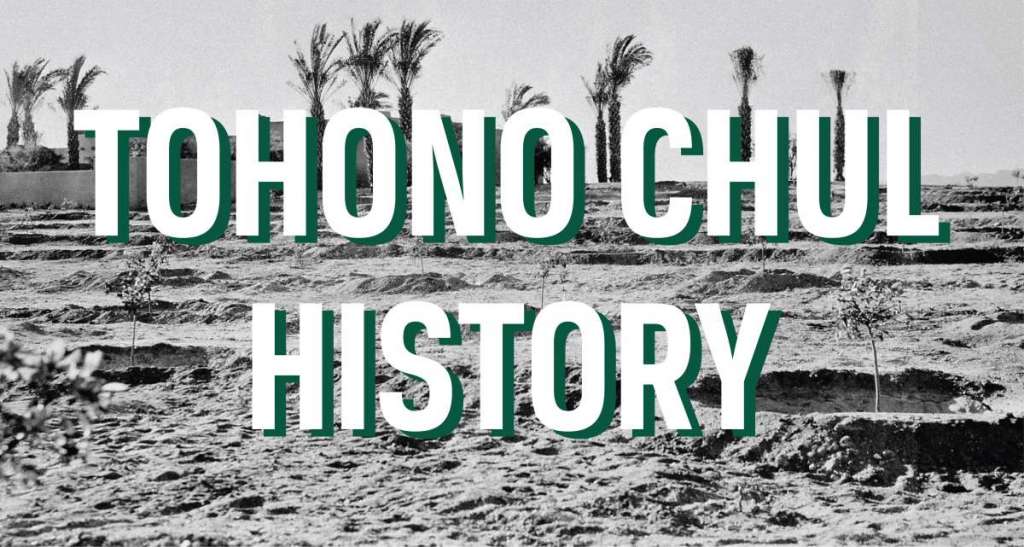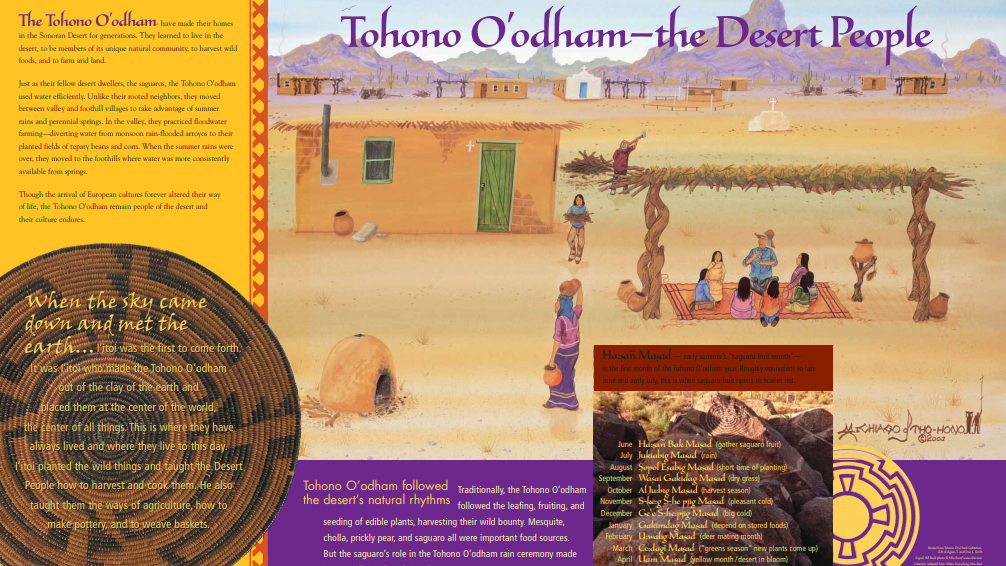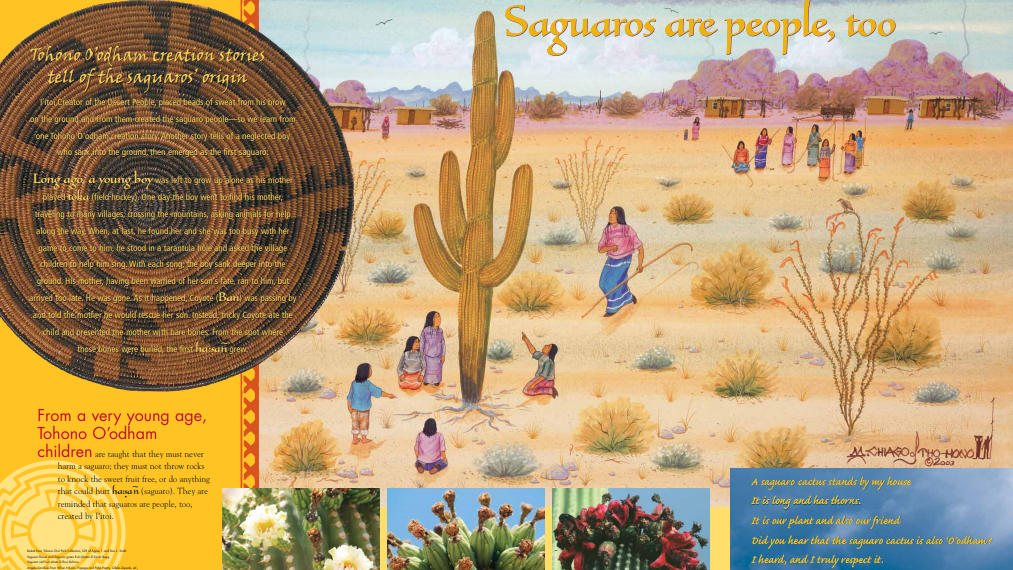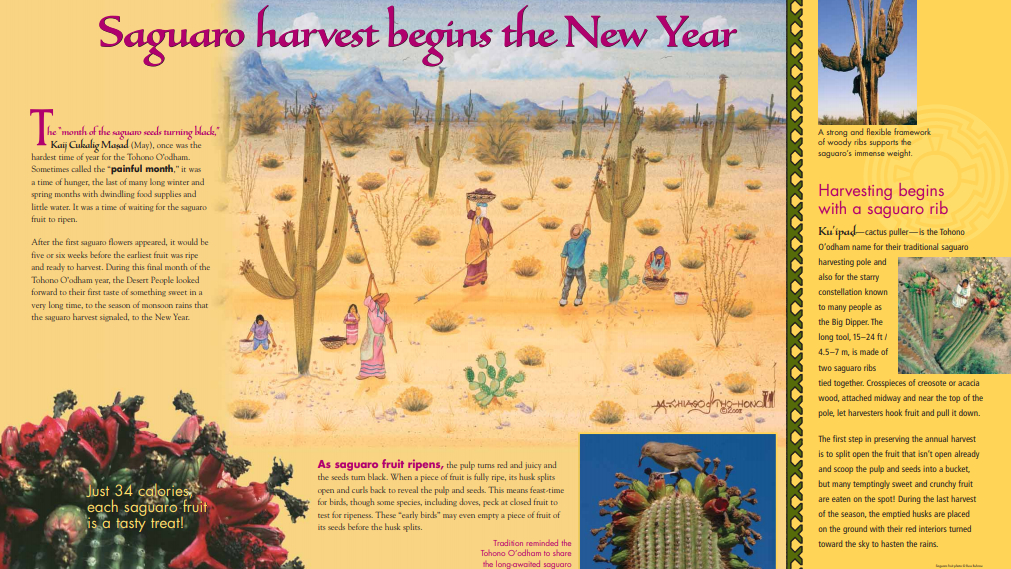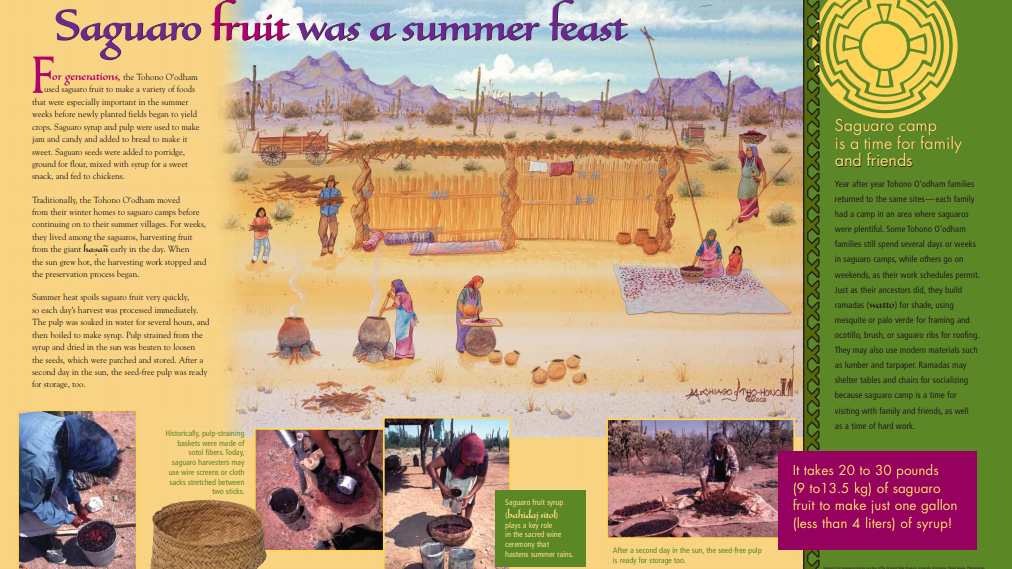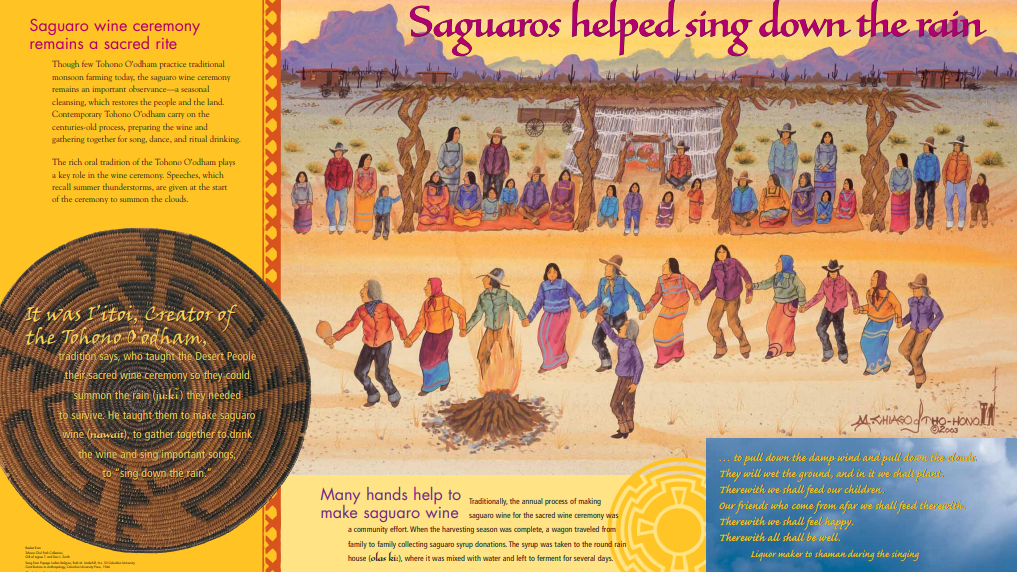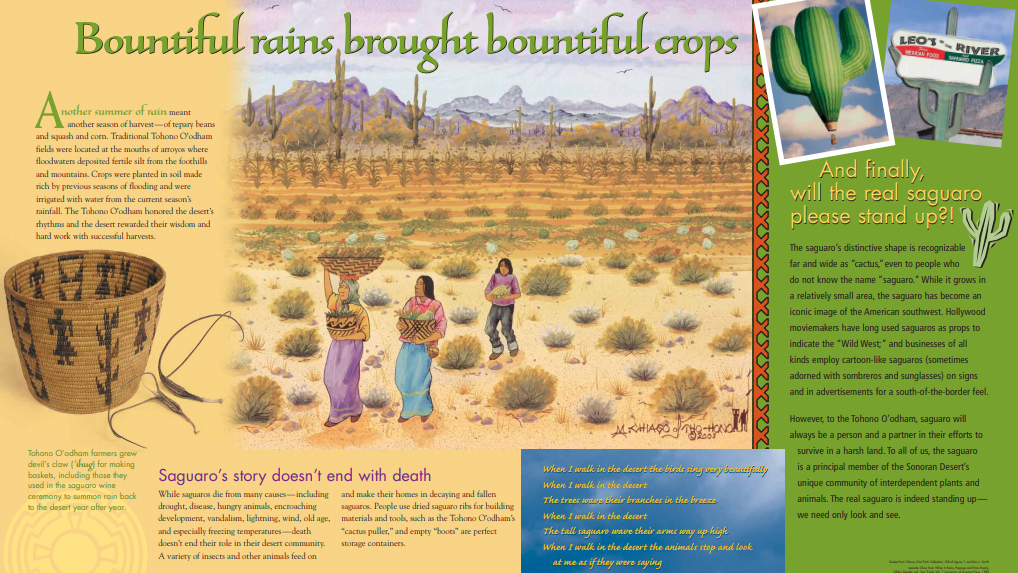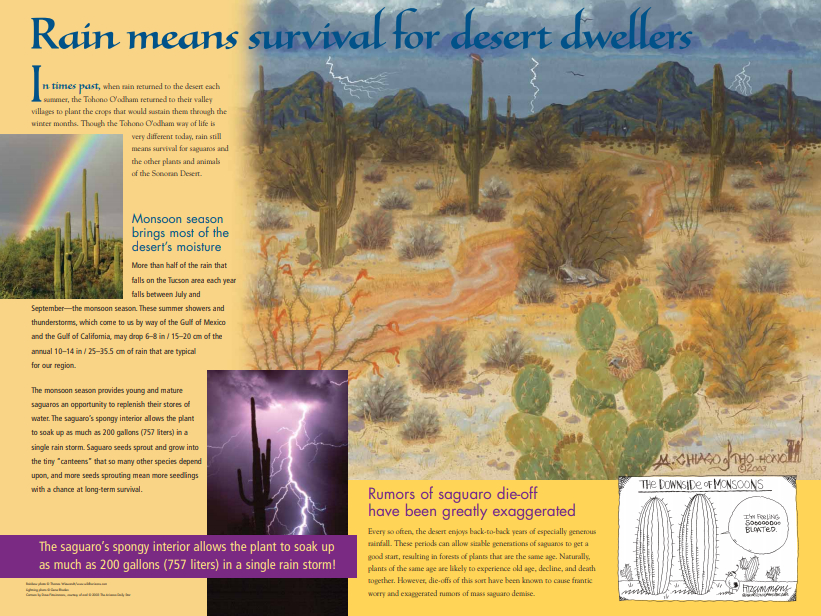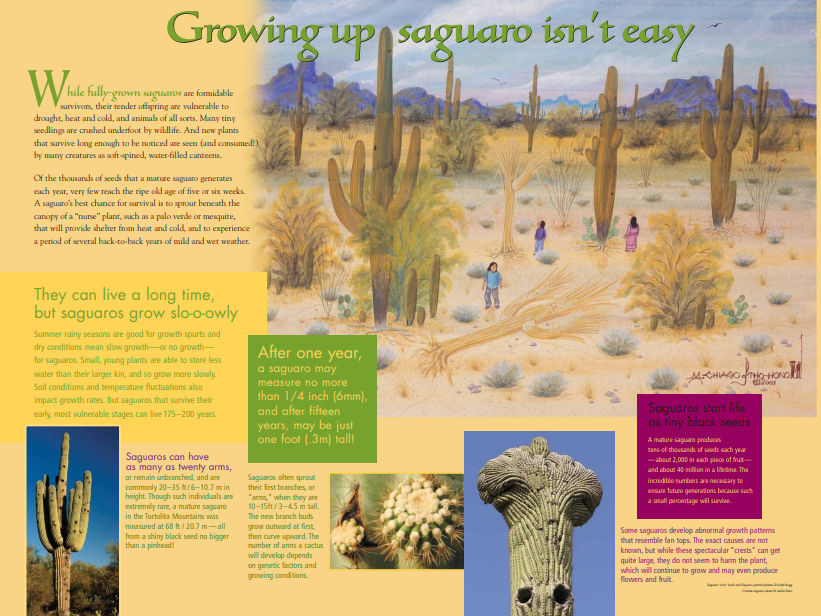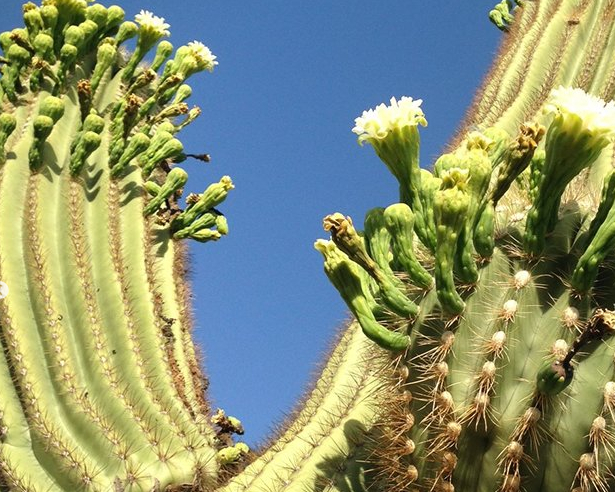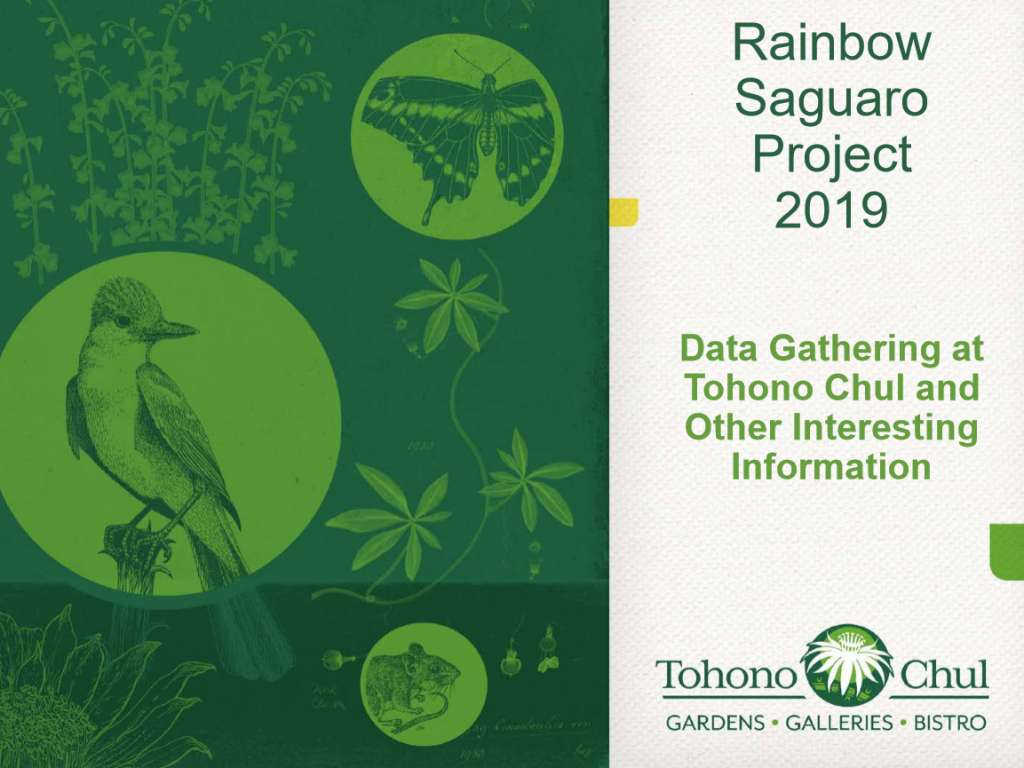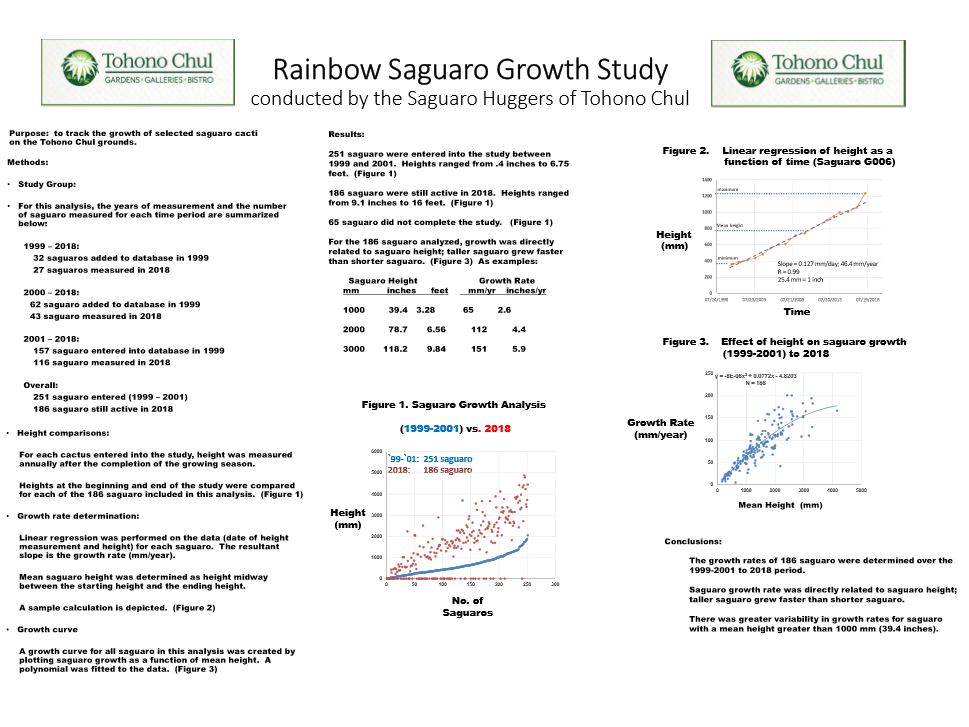Hot, Hot, Hot, … with triple-digit temperatures and single-digit humidity levels, the desert bakes in May and June. Rooted in place, plants have to be tough to survive. In the case of the saguaro, a waxy coating on the plant’s skin restricts water loss, and spines shade its surfaces from the sun. Like all cacti, saguaros and succulents, their stems swelling and shrinking, with the intake or loss of water collected by roots – some just below the surface – spread as far or father than the plant is tall. Other plants conserve water with smaller leaves, or no leaves at all. Limberbush for example, is drought-deciduous, shedding its leaves when it is too dry.
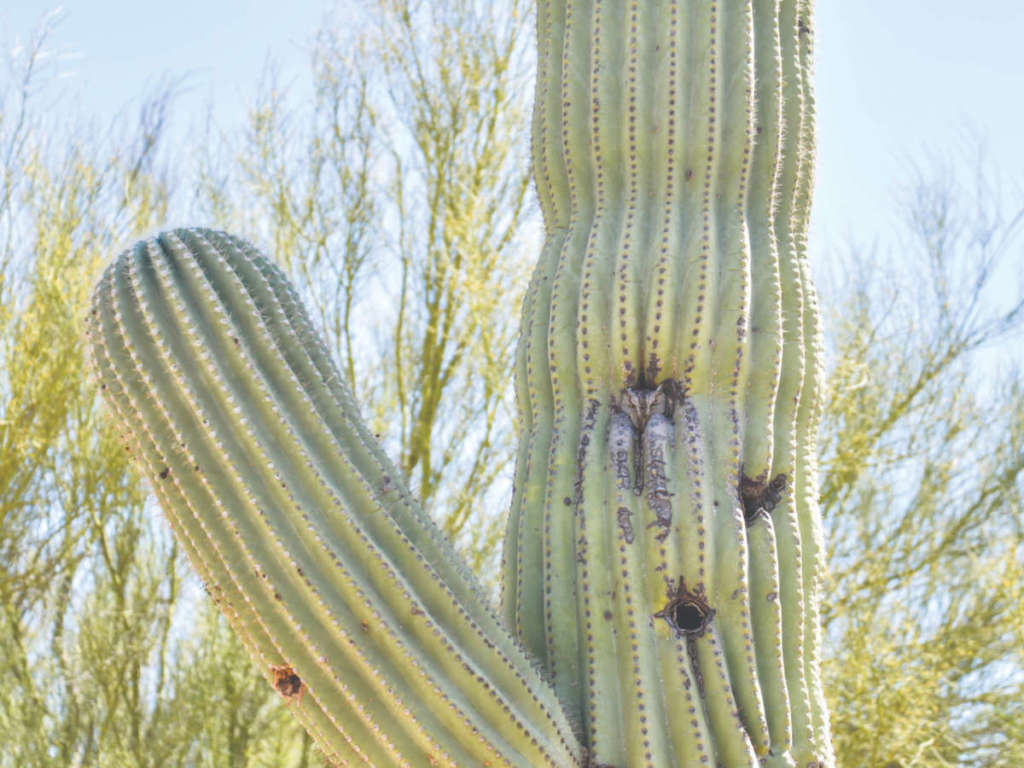
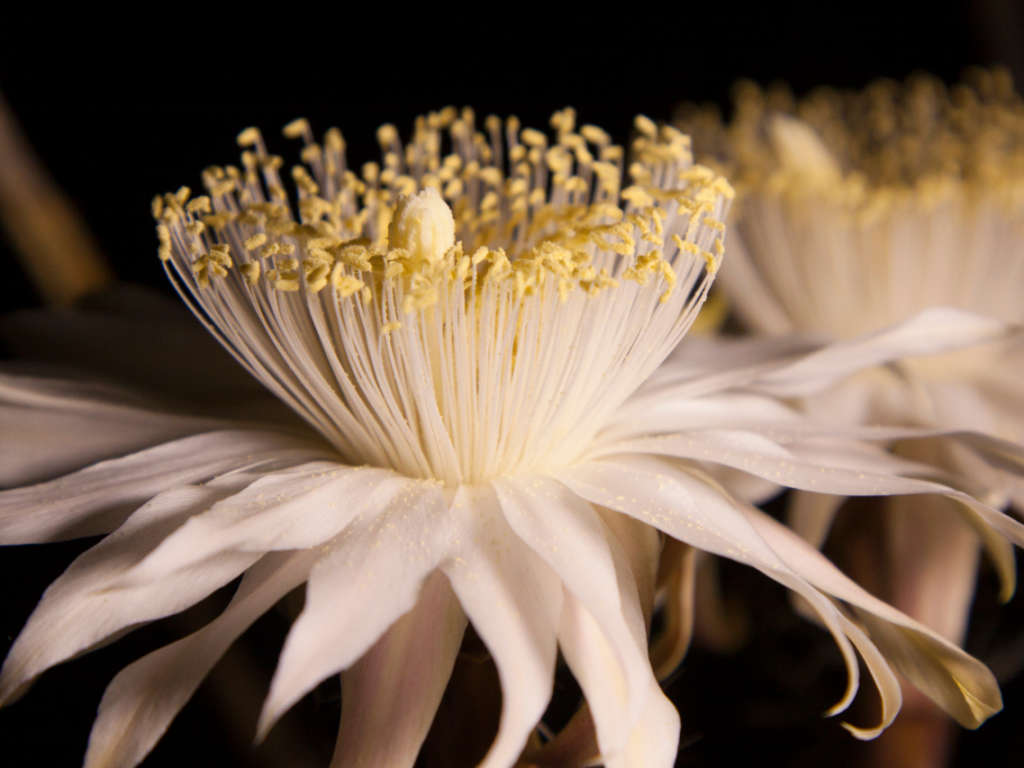
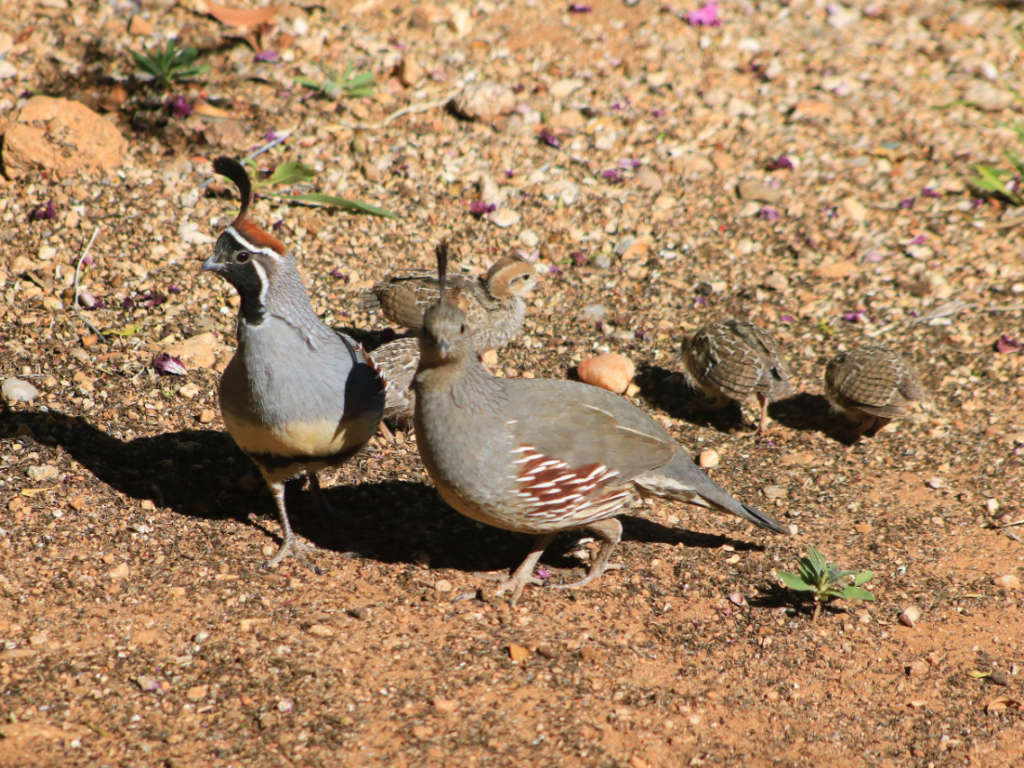
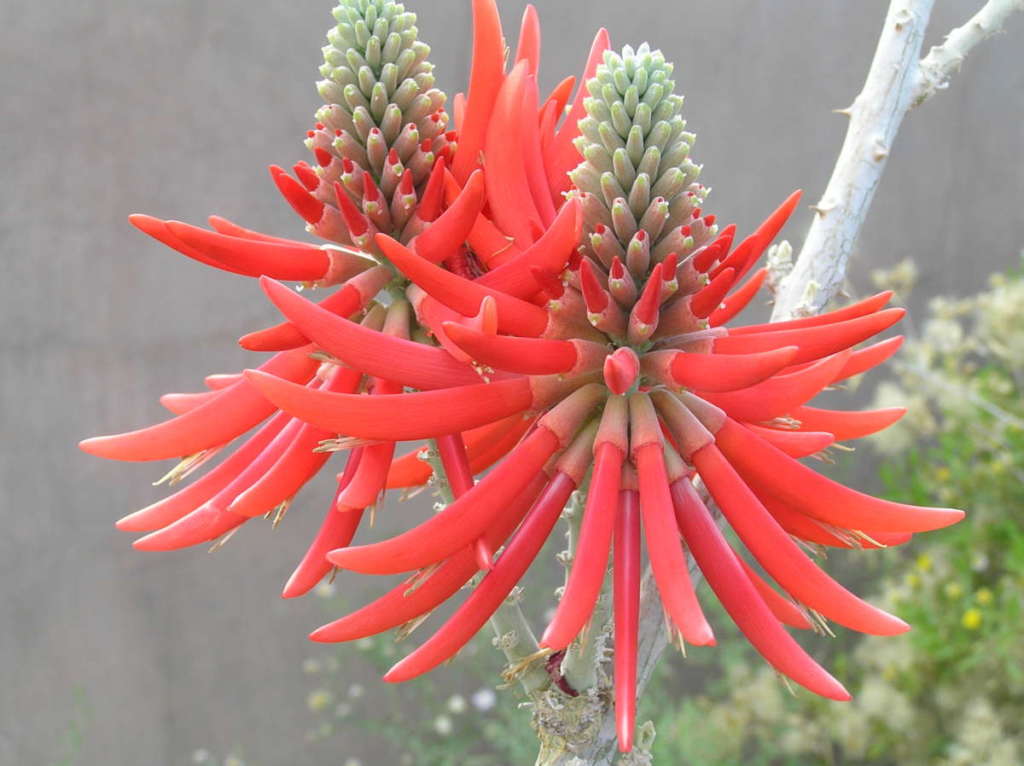
Day 1 – Saguaros, The Showstopper
Learn From Our Saguaro Discovery Trail Interpretive Signs, click on the image
[expand title=”MORE SIGNS” rel=”fiction”]
[/expand]
Saguaro National Monument
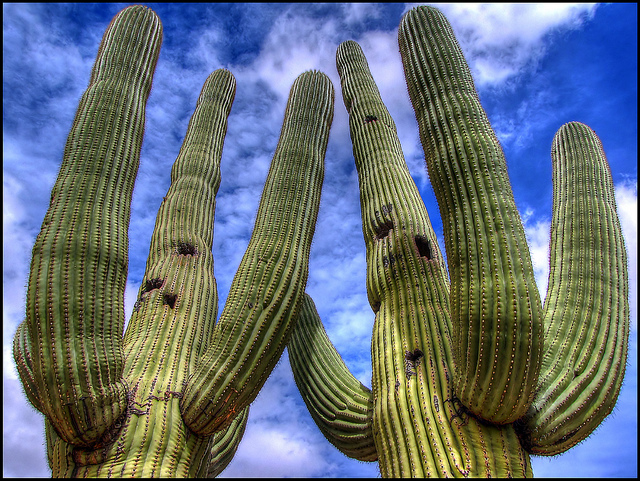
Tucson, Arizona is home to the nation’s largest cacti. The giant saguaro is the universal symbol of the American west. These majestic plants, found only in a small portion of the United States, are protected by Saguaro National Park, to the east and west of the modern city of Tucson. Here you have a chance to see these enormous cacti, silhouetted by the beauty of a magnificent desert sunset.
In Defense of Plants – Blog
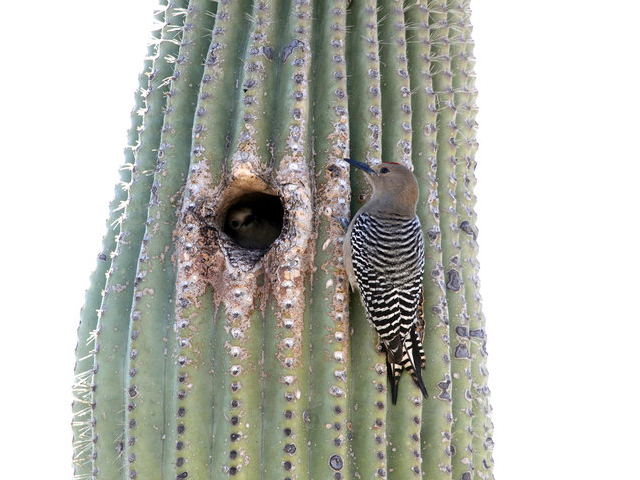
Where does one begin with a plant like the saguaro cactus (Carnegiea gigantea)? It is recognized the world over for its iconic appearance yet its native range is disproportionately small compared to its popularity. It is easily one of the most spectacular plants I have ever encountered and I will never forget the sound the wind makes as it blows over its spiny pleated trunk.
Cactus Forest Drive E-Book
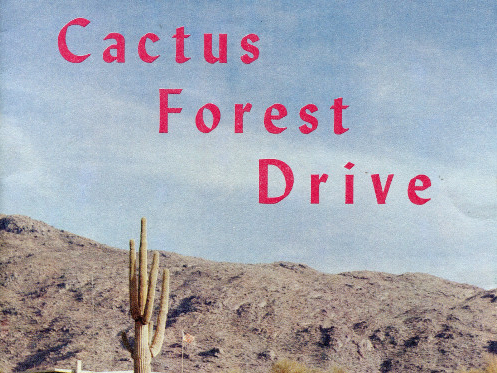
Saguaro National Monument is one of more than 175 units administered by the National Park Service, U. S. Department of the Interior. They include such outstanding scenic areas as Grand Canyon and Yosemite National Parks and other Parks and Monuments set aside for their scenic, scientific, historic or archeologic values. These superb areas are yours and are a part of your heritage…
Arizona Illustrated – Saguaro Census by Arizona Public Media
The Mysterious Crested Saguaro by Arizona Public Media
Standing with Saguaros
Borderlands Theatre
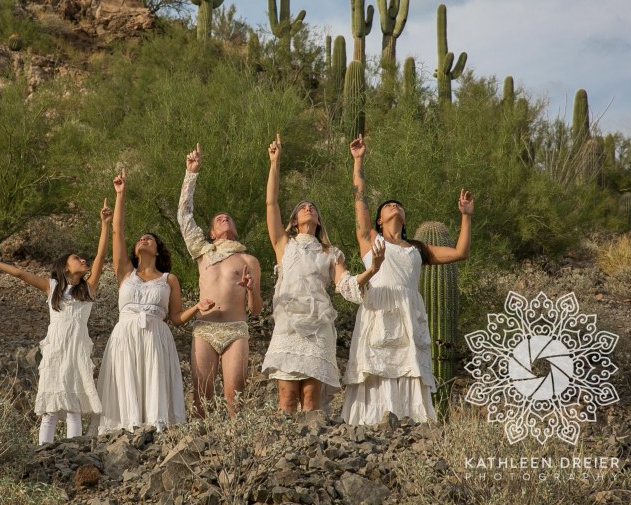
Standing with Saguaros is series of site-responsive performances and activities in Saguaro National Park and Tucson celebrating the saguaro cactus. A collaboration between Borderlands Theater and Saguaro National Park.
KXCI’s The Saguaro Minute – Podcast
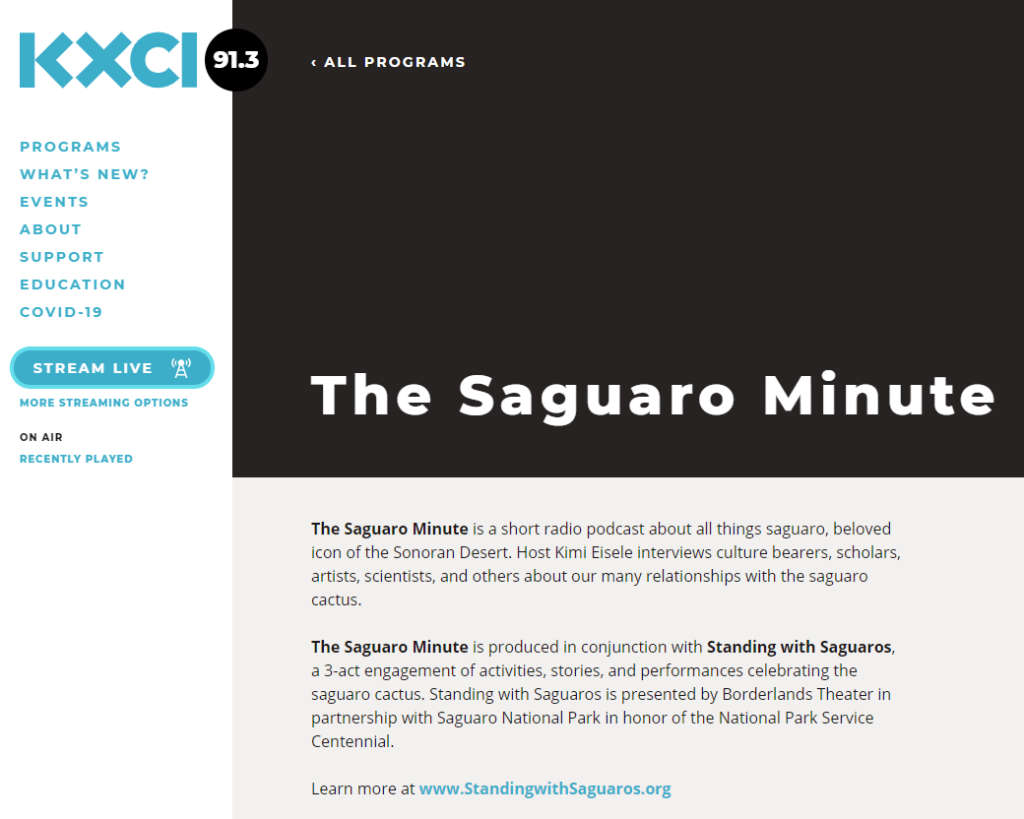
The Saguaro Minute is a short radio podcast about all things saguaro, beloved icon of the Sonoran Desert. Host Kimi Eisele interviews culture bearers, scholars, artists, scientists, and others about our many relationships with the saguaro cactus.
The Saguaro Ball Featured on AZPM
Performance artist Kimi Eisele organized an “old fashioned” ball on the eve of the National Park Service Centennial celebration. The idea was to explore the idea of “how does one duet with a different species?” Story: Andrew Brown
Activity Time
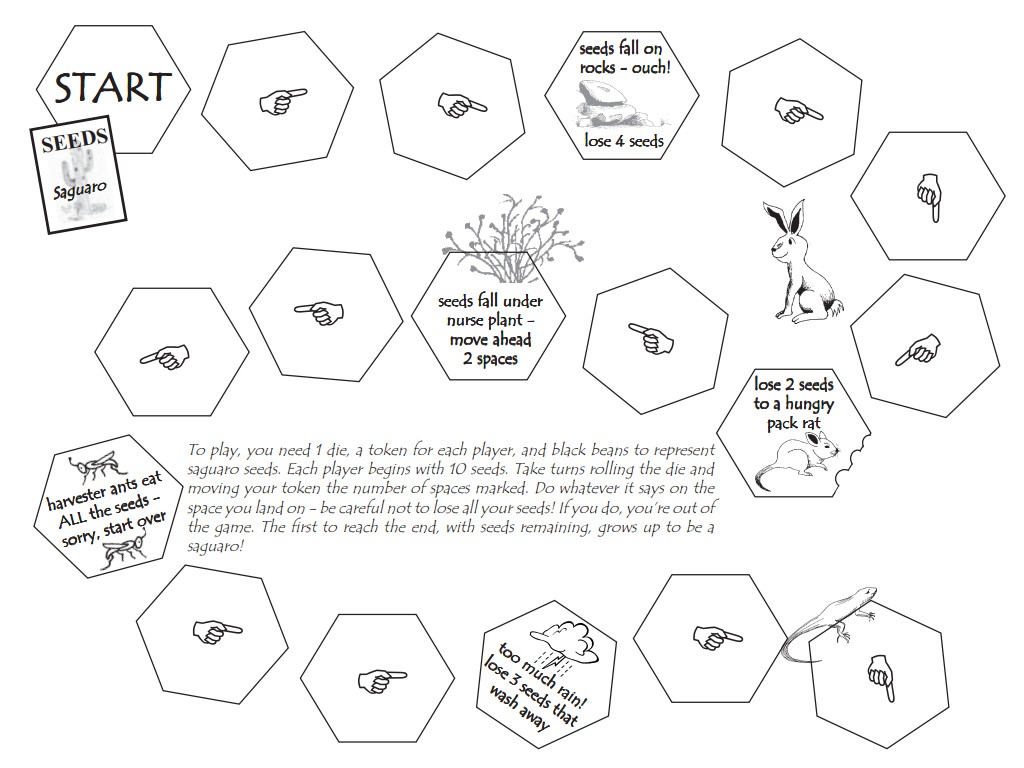
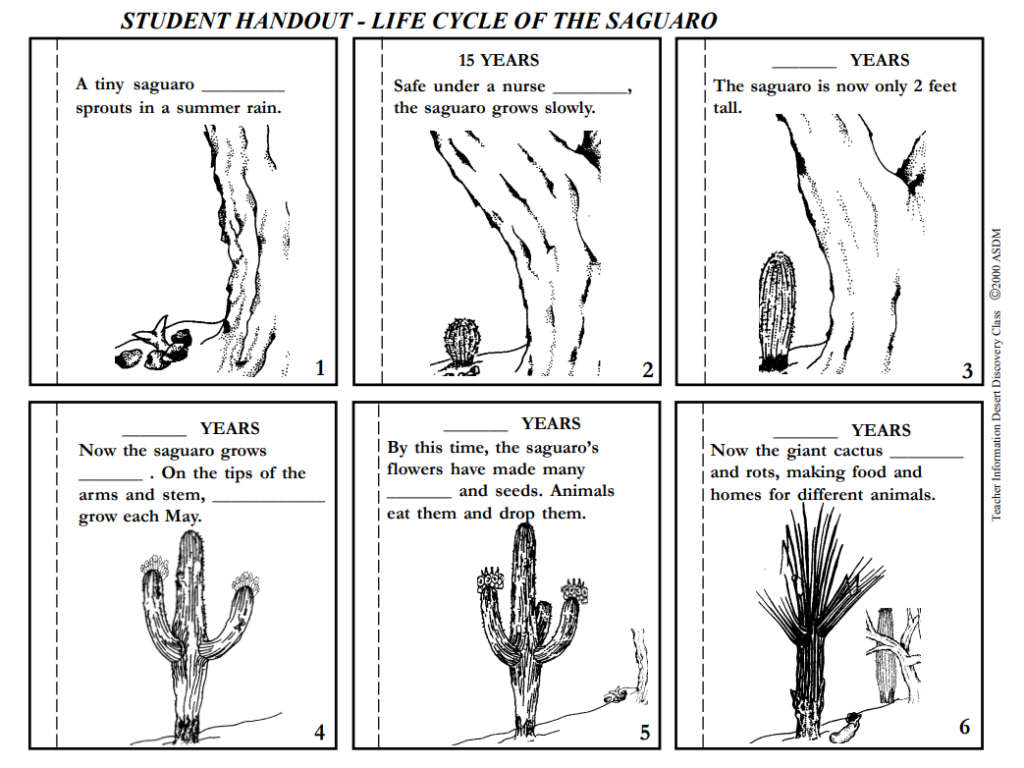

Day 2 – Research & Harvesting
The Tohono Chul Docent Saguaro Project, click on images
Harvesting History
Harvesting saguaro cactus fruit
Saguaro Fruit Harvest
Big Jim: Harvesting saguaro fruit with a guiput
Time To Get Cooking
Native Seeds/SEARCH
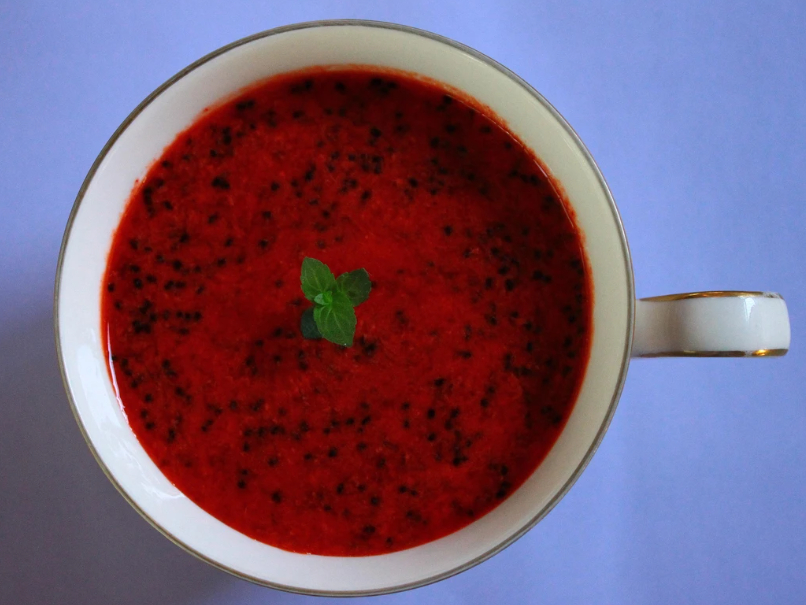
Desert Tortoise Botanicals
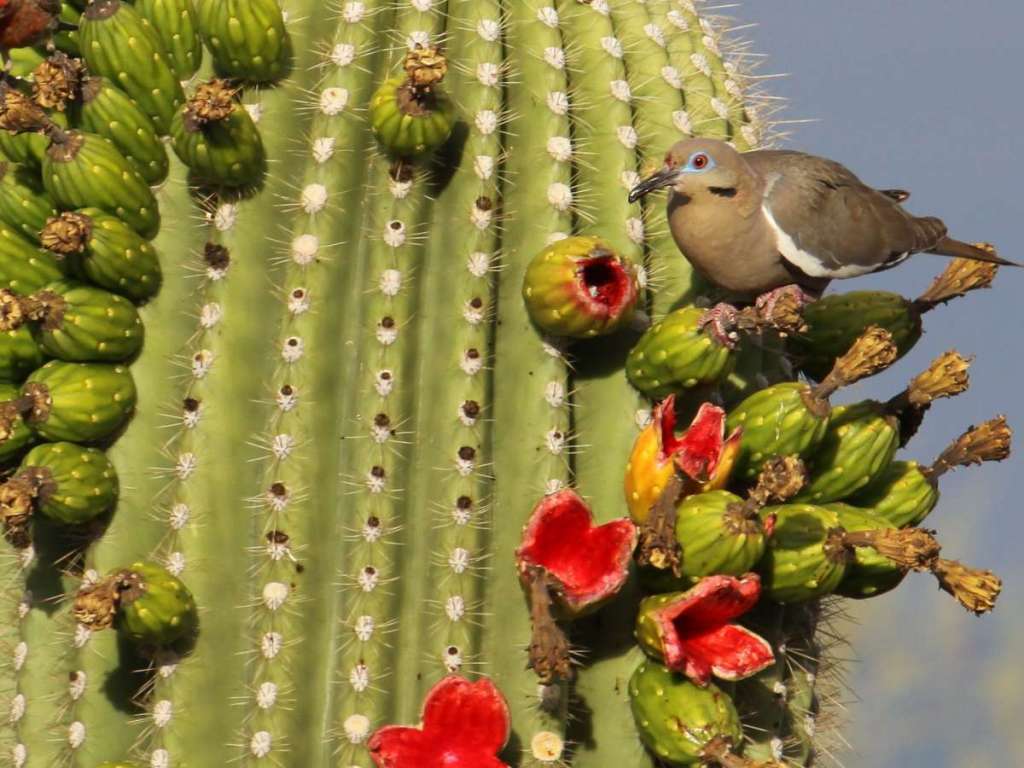
Saguaro Syrup – AZ Daily Star
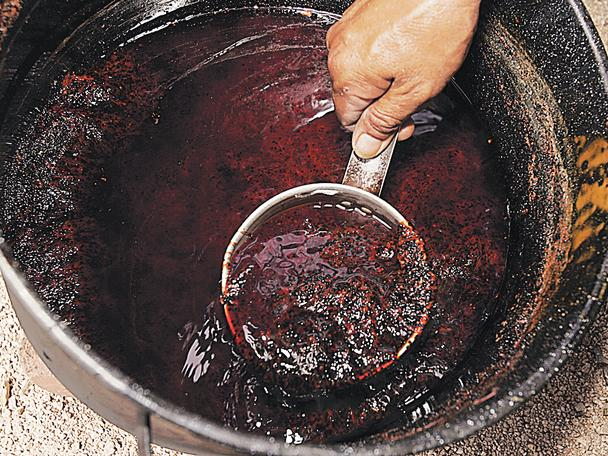
David Yetman
The Saguaro Cactus A Natural History
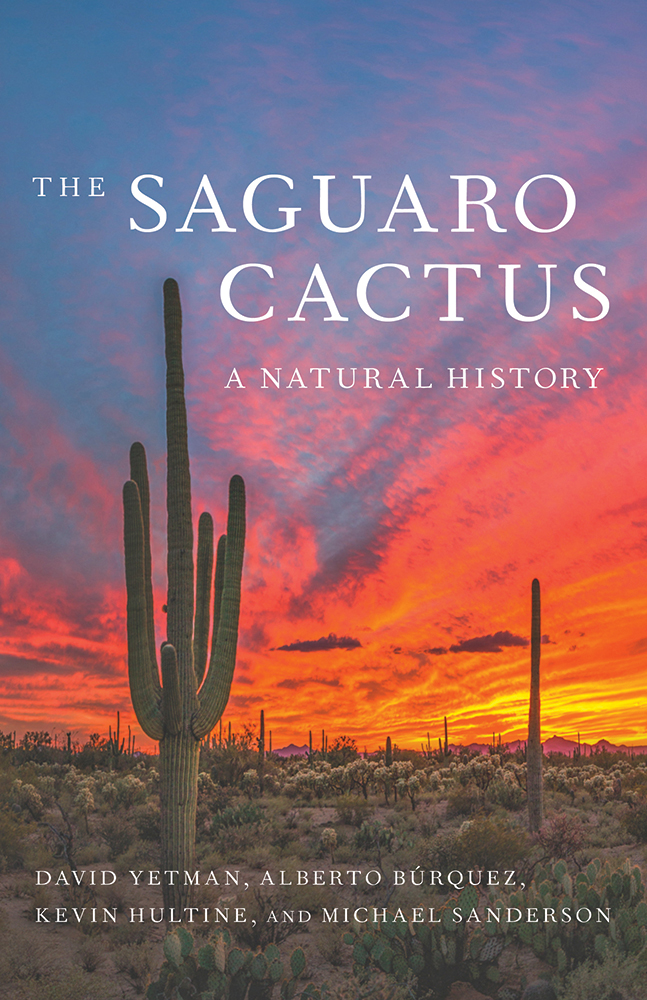
This book offers a complete natural history of this enduring and iconic desert plant. Gathering everything from the saguaro’s role in Sonoran Desert ecology to its adaptations to the desert climate and its sacred place in Indigenous culture, this book shares precolonial through current scientific findings.
Archive Tucson
Archive Tucson is an oral history project from Special Collections at the University of Arizona Libraries. This interview is with David Yetman, naturalist, anthropologist, author, host of In the Americas and The Desert Speaks, former member of the Pima County Board of Supervisors, and one of the first Philosophy PhDs from the University of Arizona.
Day 3 – Artistic Expression

This week we are showcasing local artwork that features dry summer!
Feeling inspired and ambitious? Try a whole wall with wallpaper!

Get To Know The Artists
Erinn Kennedy
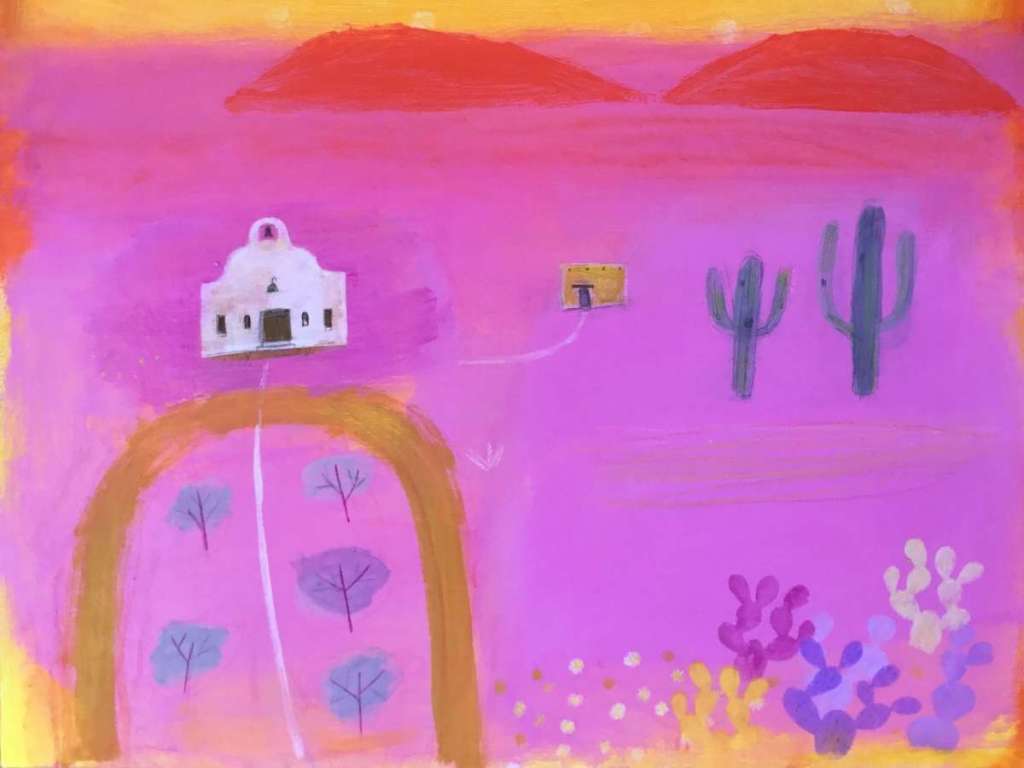
San Pedro Chapel
This painting is of a place in Tucson that I love and visit often. I have tried to capture the essence of this location at a particular time of day and during a particular season.
More
While working on this, I explored how contrasting color temperatures can play out in a painting. I observed how cool colors, like cobalt blue and violet, are effected by warm colors. like pink and yellow ochre. I think of these cool/warm color relationships as a metaphor for how during the winter cold snow can be seen up in the mountains while hot, summer-like temperatures can occur down in the valley.
I paint the objects and places that I love and are a part my everyday life. I find inspiration in the Sonoran Desert landscape in and around Tucson, Arizona where I live. I am very interested in its natural beauty, historic manmade structures, and stories left behind. I am equally interested in the atmosphere that surrounds these places and the moods they evoke.
When I see a still life arrangement or an outdoor scene that captures my attention I will make several sketches of it from observation, emphasizing spatial relationships, passages and colors that I find interesting or unexpected. When starting a painting I put these sketches away and work from memory and attempt to capture the beauty and essence of these engaging places and things.
To learn more about Erinn Kennedy and her work, go to http://www.erinnkennedy.com/index.html
Janet Windsor
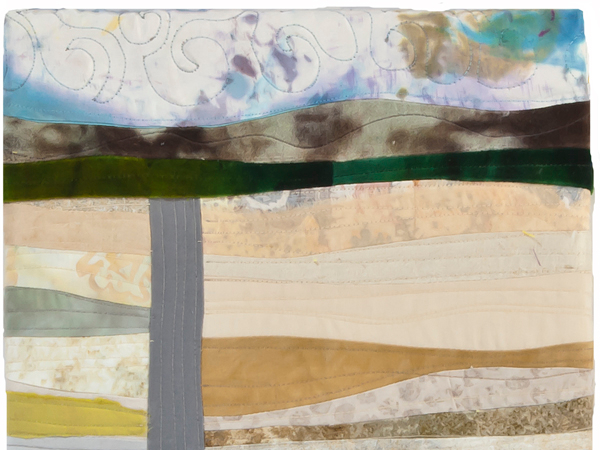
Road to Summer
The seasons change quietly in the Sonoran Desert. For drama look for the cottonwoods on the horizon. The road leads us to water and to our harbingers of seasonal change.
More
My work is almost entirely machine pieced and quilted. I piece my works because I like the fact that, while it is an art quilt that would never grace a bed, it still makes reference to the heritage of quilting. I love thinking about the fabrics as I arrange them. I remember the days spent dying and printing and the trips all over the world where I have gathered these fabrics. I imagine our grandmothers must have done something similar as they pieced old garments into new bedcoverings.
I usually begin with photographs. I comb through them looking for colors and color combinations. The subject of the photos is not necessarily what the piece will be about. Sometimes it is just about color. Although, most of the time, I look for photos which present the images I am hoping to convey. Then the fun begins.
To learn more about Janet Windsor and her work, go to http://www.janetwindsor.com/
Debra Kay
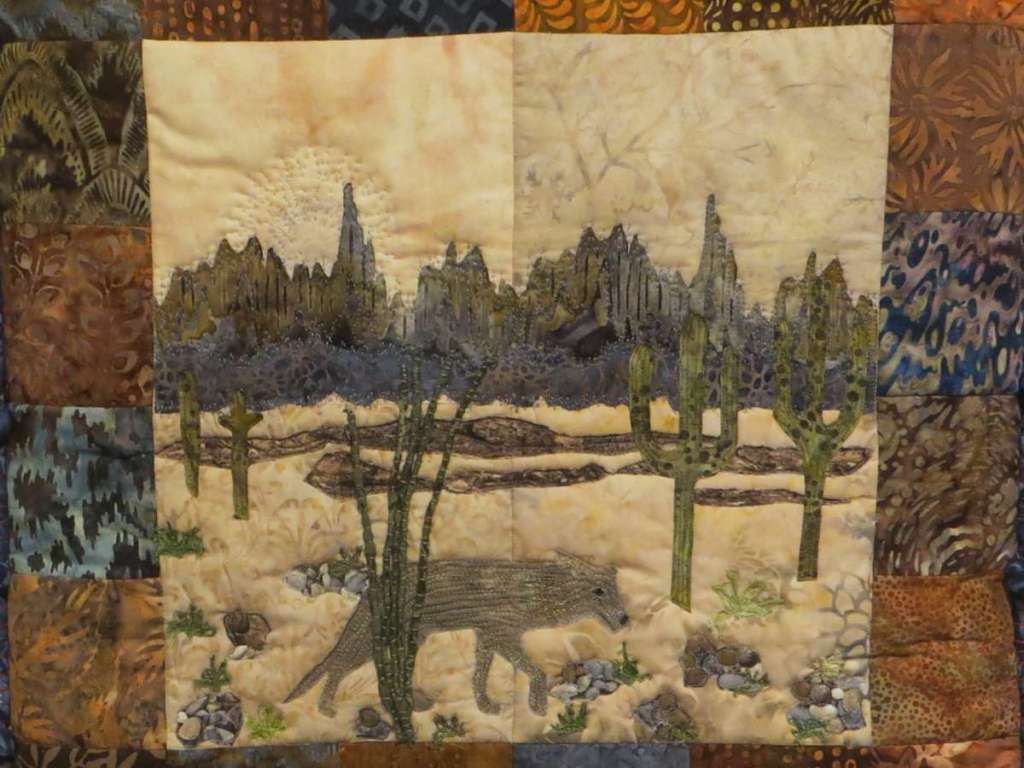
Summer Desert at Dusk
Summer Desert at Dusk showcases a coyote on the prowl after summer sunset. The moon is rising over the Catalina Mountains in various hues of blue.
More
The decision to pursue textile art came a few years ago. I taught myself to sew at age 13 and began quilting in the early 80’s. I took an artist’s workshop to learn a technique to incorporate into my work. That workshop was a turning point for me in becoming an emerging artist and helped me to see endless possibilities.
To learn more about Debra Kay and her work, go to https://debrakay.art/
Annie Gordon
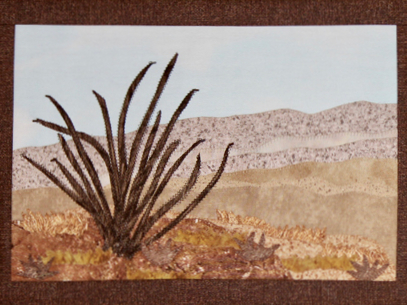
Ocotillo: Before
The Ocotillo, in its dormant stage, is a beautiful cluster of curved and quirky branches that have a stark beauty. They are also one of the most dramatic examples of the
More
the most dramatic examples of the effect of any water on desert plants as within seemingly moments of rain they sprout petite richly verdant leaves, and then when the blooming season arrives….Oh my!
I remember being taught how to embroider by a friend’s grandmother when I was in 1st grade and love and use embroidery to this day. I am self-taught in many fabric related arts and have taken many classes through the years. In 1981, I earned an MFA in Weaving and Textile Design from the School for American Crafts at RIT in Rochester, NY. For many years, I wove and sold scarves, shawls and jackets.
I moved to Tucson in 1989, and though I no longer weave, I do continue to work with fabrics creating wall art, quilts, clothing and accessories.
To view more pieces by Annie Gordon, go to https://www.etsy.com/shop/AnnieGFabricArt
Day 4 – Talking Art
A conversation with artist/director Ted Wade Springer and James Schaub, Tohono Chul Curator of Exhibitions
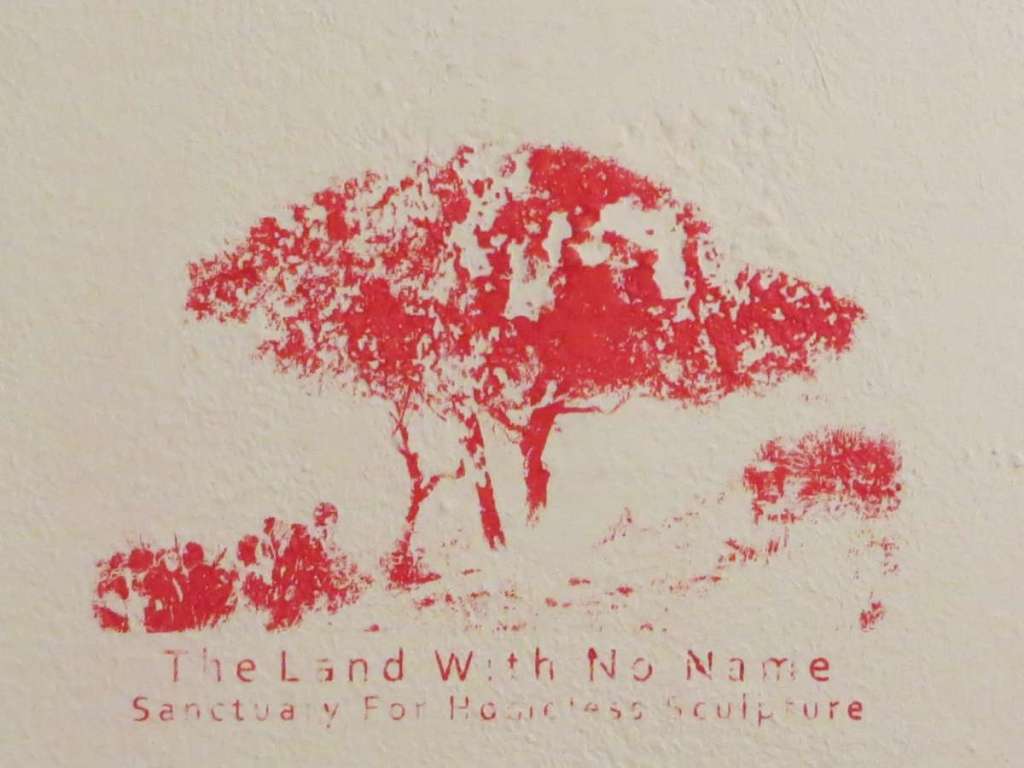
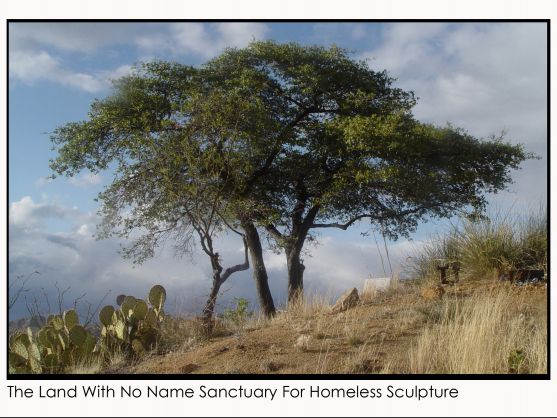
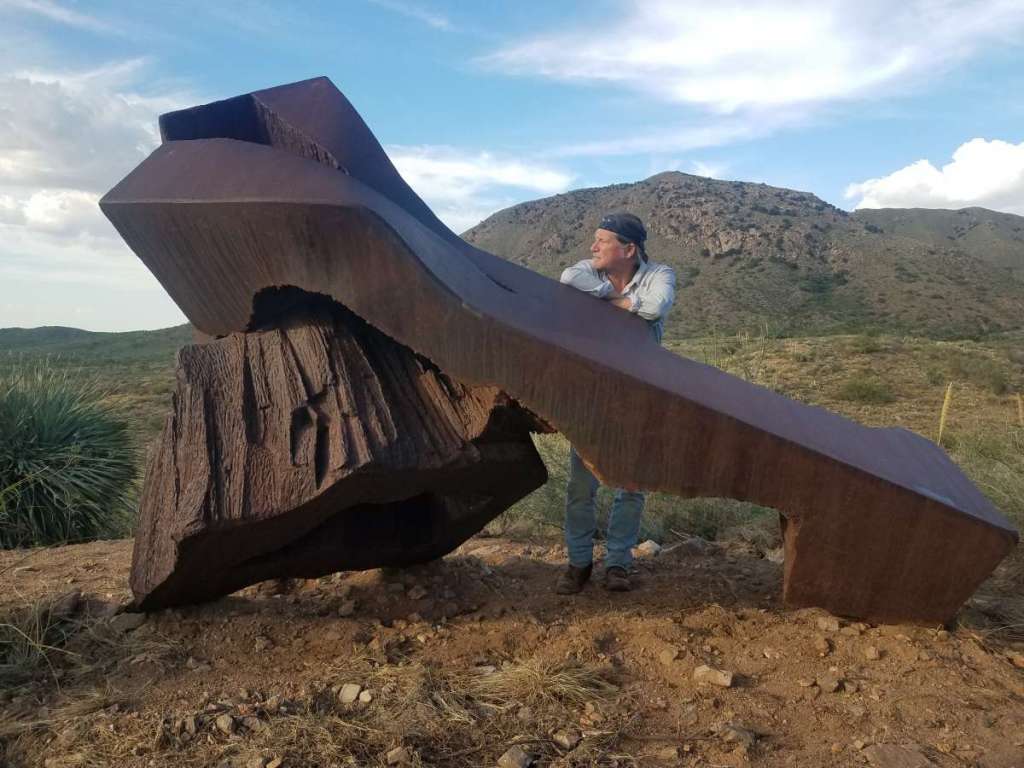
“The tree is necessary for all life, it nourishes and heals all creatures great and small. It provides shelter and shade as it produces air, water, food, and fuel. Whether majestic or withering, the tree conveys a psychological and emotional presence that is palpable; in the natural landscape it is relied upon as a marker of place and time. Humans easily anthropomorphize the tree: we both possess trunks, limbs and skin. Conversely, humans become tree-like when they put down roots, endure hard times, flower, or branch out toward new horizons. Humans and trees share the life-cycle of birth, death, and re-birth. We are both storytellers; we both possess memory, wisdom, and bear the physical traces of our personal histories.”
Read More
These words were the introduction to the first project I curated at Tohono Chul, the exhibition The Tree: Myth, Symbol, Metaphor. Starting my position as Curator of Exhibitions in September of 2014, I needed to put together the exhibition in short order, as it opened in mid-November. I worked fast. To get things going, I poured over ten years of exhibition files. I discovered artists that had sent work in for various projects at Tohono Chul – they were all new to me. My plan was to introduce myself to a new group of artists whose work I admired in the exhibition files and to rely on artists I had worked with in the past.
At first, my thinking was fairly obvious – artists that used seeds, roots, bark, trunks, branches, buds, leaves, flowers, trees, and wood as material and imagery. It became more complex and abstract as I began to think about how the work I was looking at functioned as myth, symbol, or metaphor.
I selected sixteen artists. Eight of them were new to me – eight of them I already knew.
Ted Wade Springer agreed to be part of The Tree. I had known Ted and his work for almost fifteen years at the time. He is a kind and generous person and the only one I know that truly loves the dry heat of May and June; the hotter, the better. Ted is his work – his sculptures utilize concrete, steel, motor oil, straw bales, re-bar, duct-tape, iron, and wood. I have seen him trowel and cast concrete, melt and pour iron, raise and release a trip hammer to forge steel, and guide and direct saw blades and fire deep into wood.
Ted was the perfect fit. I was imagining one of his large, heavy, angular, and rugged pieces occupying a prominent space in the gallery. Substantial material with mass and volume. I didn’t get that. Ted was working in New York and wouldn’t return to Tucson until after the exhibition opened. In his and his sculpture’s absence, Ted instructed me to screen-print an image of an Emory oak tree onto one of the gallery walls.
The screen-print frame Ted provided was burned with the image of an Emory oak situated on the land he and wife, the artist Kate Long Hodges, own southwest of Tucson. The Emory oak is the gathering place and symbol for their non-profit alternative art space, The Land With No Name Sanctuary For Homeless Sculpture.
For the exhibition Ted and Kate’s tree was very much “a marker for place and time” and clearly a “Symbol” for The Land With No Name.
With one swipe of the squeegee, the tree was screen-printed in red directly to the wall.
Oddly and without dimension, the screened image possessed much of the same mystery his sculpture did – It moved between presence and absence, it was fixed yet moveable. Unlike Ted’s sculpture it possessed absolutely no mass, no volume. Furthering its incompleteness, the texture of the wall broke the image up. The tree existed as an ephemeral mark that would be covered when the exhibition was over. And yet, it was filled with meaning.
We were exhibiting an idea.
Ted titled the piece The Tree as Place and contributed this passage:
“Tree as place
Place as Space
Material becomes immaterial
Matter becomes idea
Tree now resides within us”
The idea and image on the wall grabbed me in ways I hadn’t expected. Over the course of the exhibition I moved through the physical and conceptual properties that drew me to Ted’s work and entered into a vast expanse of time and intent.
In that stark skittering red screen-printed tree I saw an artist changing before me.
to be continued with a:
BLOGpost . Q and A
TED WADE SPRINGER artist/director . Land With No Name
in conversation with James Schaub . Tohono Chul Curator of Exhibitions
until then – to learn more about:
Ted Wade Springer and THE LAND WITH NO NAME, SANCUARY FOR HOMELESS SCULPTURE
go to: https://thelandwithnoname.org/
and the Arizona Illustrated feature
NATURE and ART
https://tv.azpm.org/p/originals-azill-arts/2016/1/26/80741-nature-and-art/
TED WADE SPRINGER
Ted Wade Springer grew up in Hopedale, Illinois on a farm raising corn, beans, and hogs. He moved to Tucson Arizona and received his Masters of Fine Arts in sculpture. Ted’s work incorporates readily accessible materials including but not limited to steel, concrete, and wood. Often the materials have had a previous life as a building material. He presently commutes back and forth from Tucson to Brooklyn, working in New York for Sculptor Ursula Von Rydingsvard. She creates large-scale sculpture made from long cedar beams that are cut, carved, and laminated. Ursula refers to Ted as her most “lyrical” cutter, and to see them in action you can watch the PBS series Art21 to see the interesting process in building these sculptures. Ted’s focus in Tucson is the 25 acres of land that he’s purchasing with Kate Long Hodges in the high desert near the Mexican border, a beautiful quiet place that he continues to share with others. He calls it, The Land With No Name Sanctuary for Homeless Sculpture.
Artist Feature – Michael Chiago
Michael Chiago was born on the Tohono O’odham reservation west of Tucson. Set against a backdrop of mountains and desert, his art works depict the traditional gatherings that bring his people together in friendship and prayer. Chiago illustrated the children’s book, Sing Down the Rain, which tells the story of the saguaro wine ceremony. This cycle of paintings in gouache and ink are part of a series commissioned by Tohono Chul Park for our Saguaro Discovery Trail that explores the importance of the saguaro for the Tohono O’odham people.
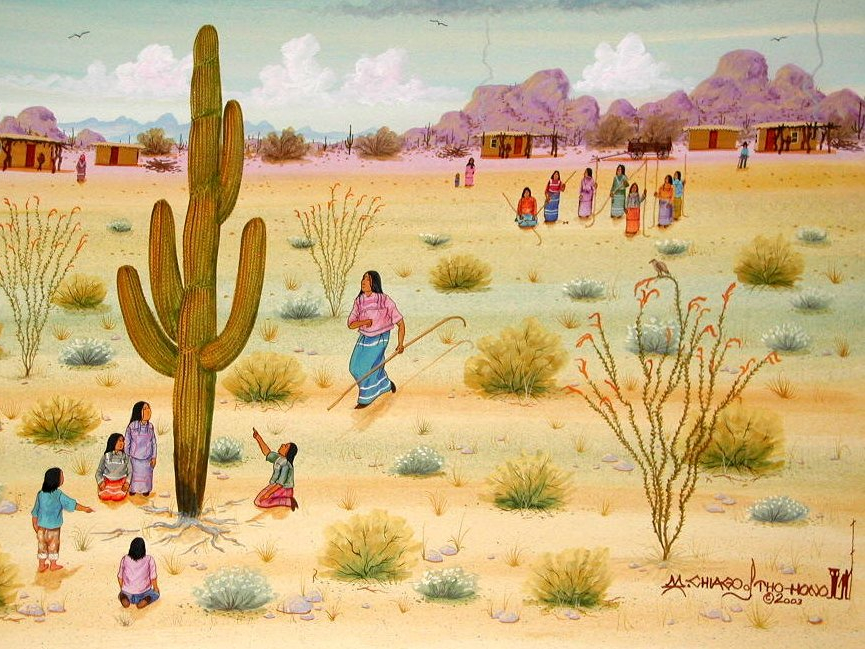
One Tohono O’odham creation story explains the origin of the saguaro thus: long ago, a young boy was left to grow up alone while his mother played toka (field hockey). One day the boy went to find his mother, traveling to many villages, crossing the mountains, asking animals for help along the way.
More
When, at last, he found her, she was too busy with her game to come to him. He stood in a tarantula hole and asked the village children to help him sing. With each song, the boy sank deeper into the ground. His mother, having been warned of her son’s fate, ran to him, but arrived too late. He was gone. As it happened, Coyote (Ban) was passing by and told the mother he would rescue her son. Instead, tricky Coyote ate the child and presented the mother with bare bones. From the spot where those bones were buried, the first saguaro grew.
From a very young age, Tohono O’odham children are taught that they must never harm a saguaro; they are reminded that saguaros are people too.
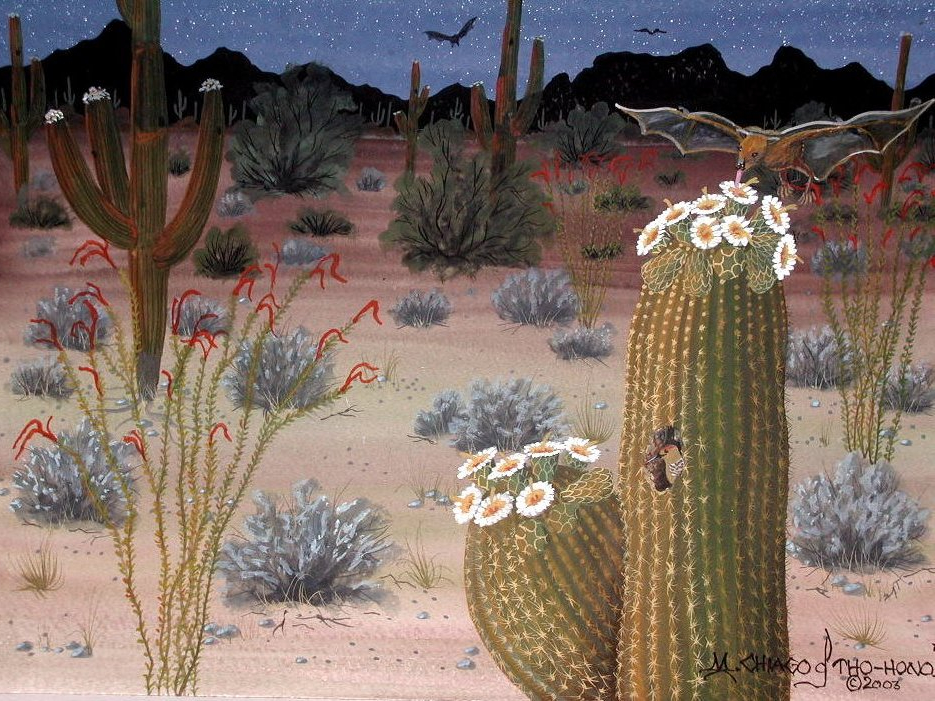
In May and June, the saguaro cactus blooms, promising fruit to come. At night, long-nosed bats feast on the blossom’s pollen and nectar, assisting in pollination, which is essential for fertilization and fruit production of the cactus. Gila woodpeckers nest in cavities hollowed out of saguaros.
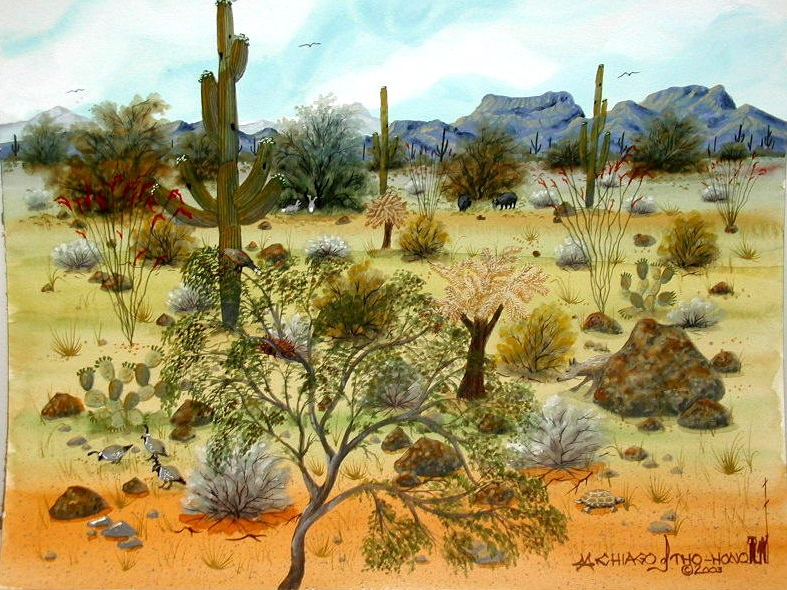
In early summer, the desert bakes in the hot, dry sun. Many animals have adapted to this harsh environment; some creatures seek relief from the heat of the day in the shade of trees. Saguaro flowers bloom and everyone hopes that rain will come soon.
Day 5 – Weekend Inspiration
Create Flower Pressings
Use Vintage Botany Illustrations For Inspiration
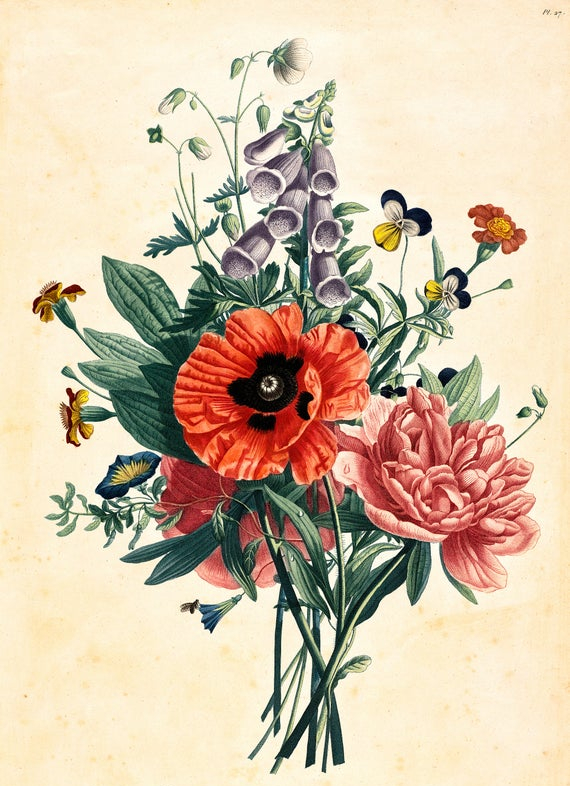
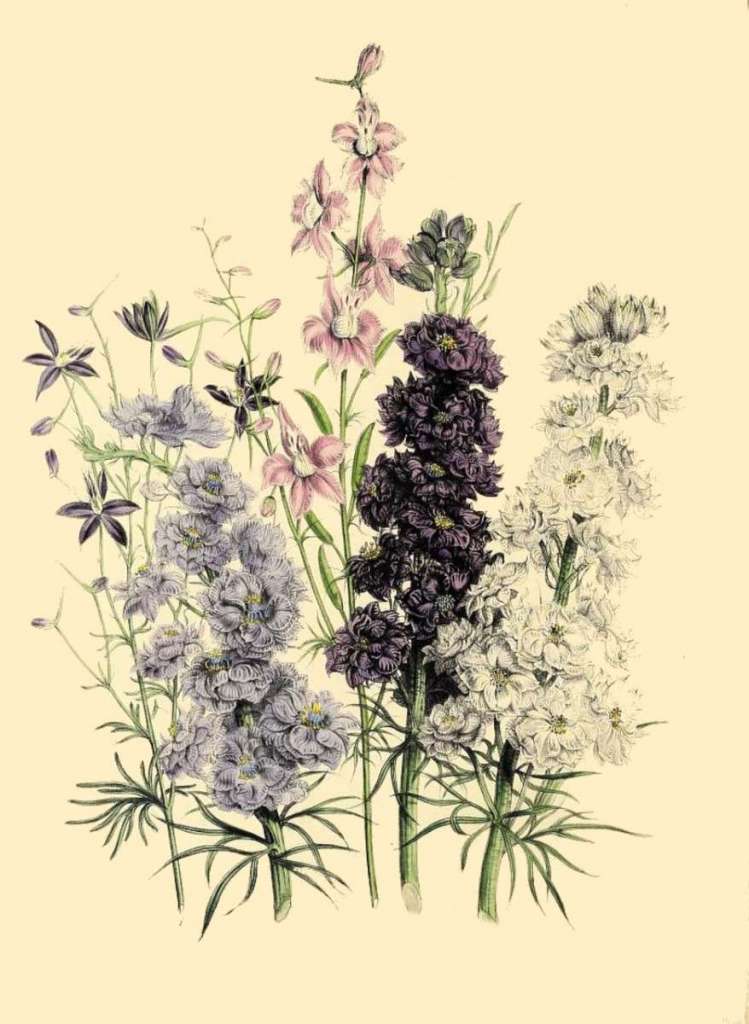
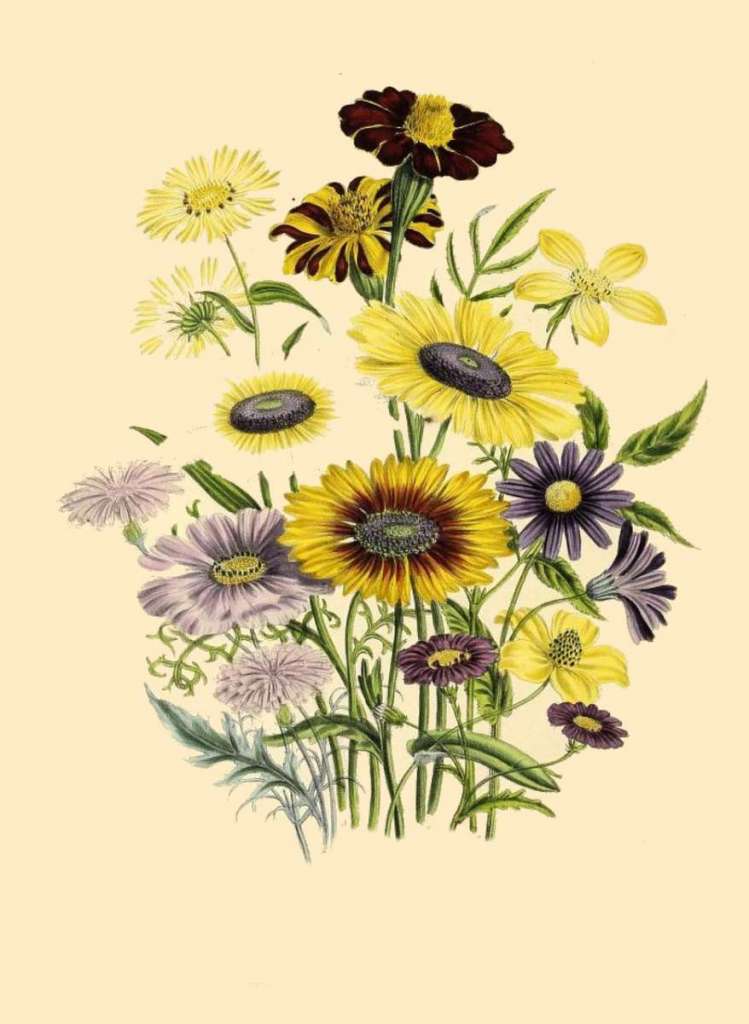
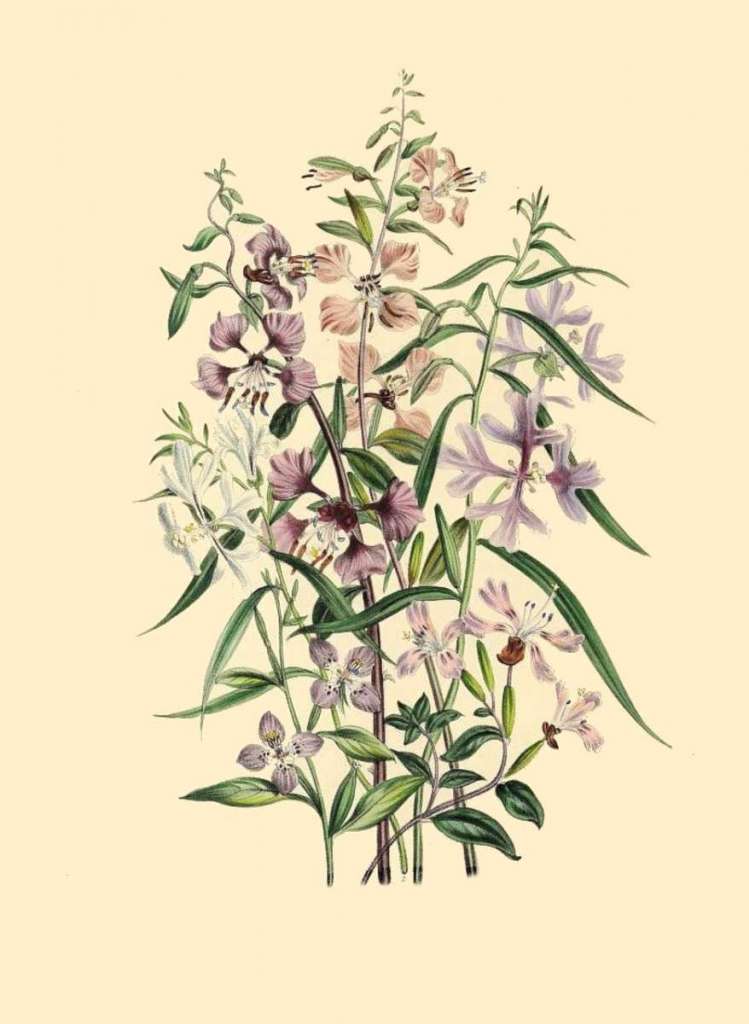
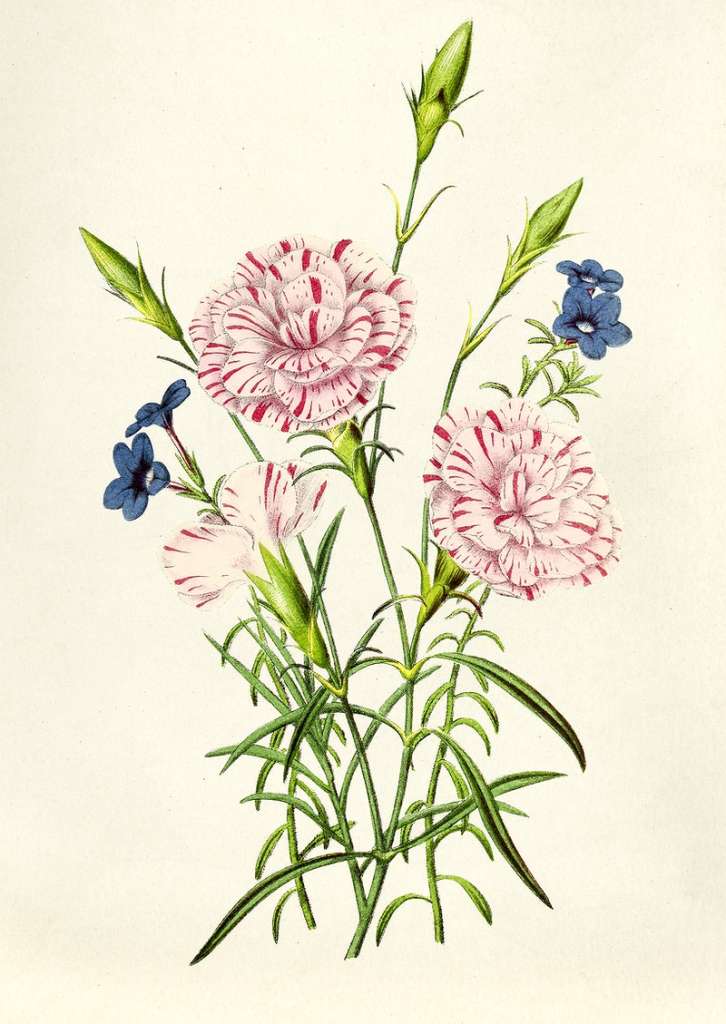
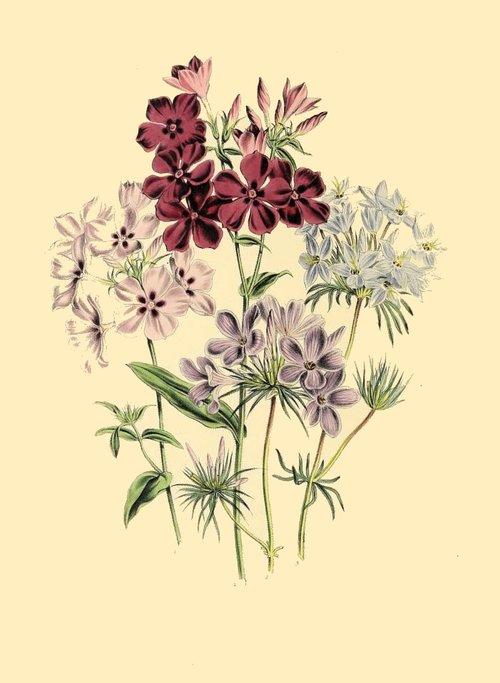
Check Out Our In Bloom Page For Petal Collection Inspiration!
Pressing Flowers
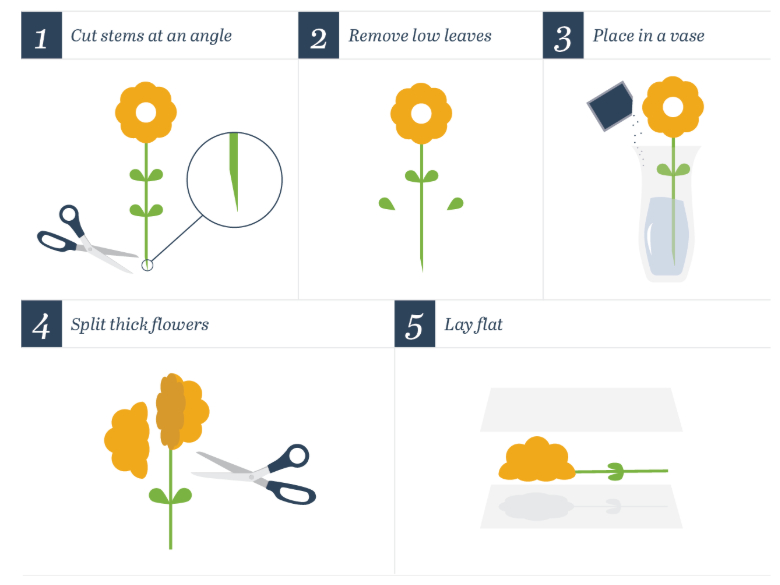
Most people want to hold on to items with sentimental value, even flowers. Whether they were a gift from a coworker, friend, for Mother’s Day or from your significant other, flowers bring a joy that we want to make last.
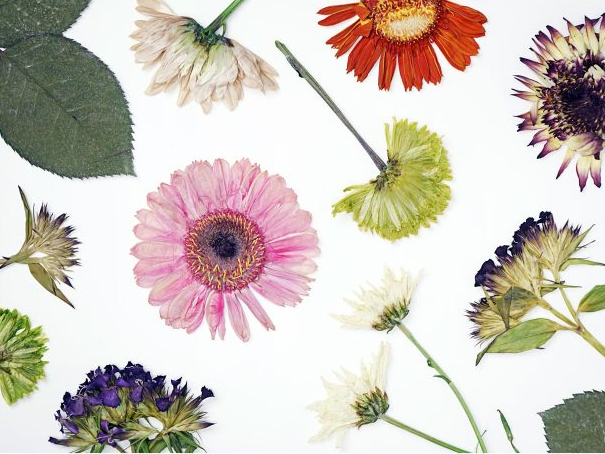
Pressed flowers can be used to personalize any decor or gift. Keep your favorite flowers on display all year round by pressing them. Giving a gift to someone meaningful? Add pressed flowers in the card to make it extra special.

By either drying or pressing your fresh flowers, you can creatively save your summer blooms to be enjoyed year round! Both dried flowers and pressed flowers can be used to make pressed flower art, fun crafts, gifts, and decorations.
Next Week’s Theme
